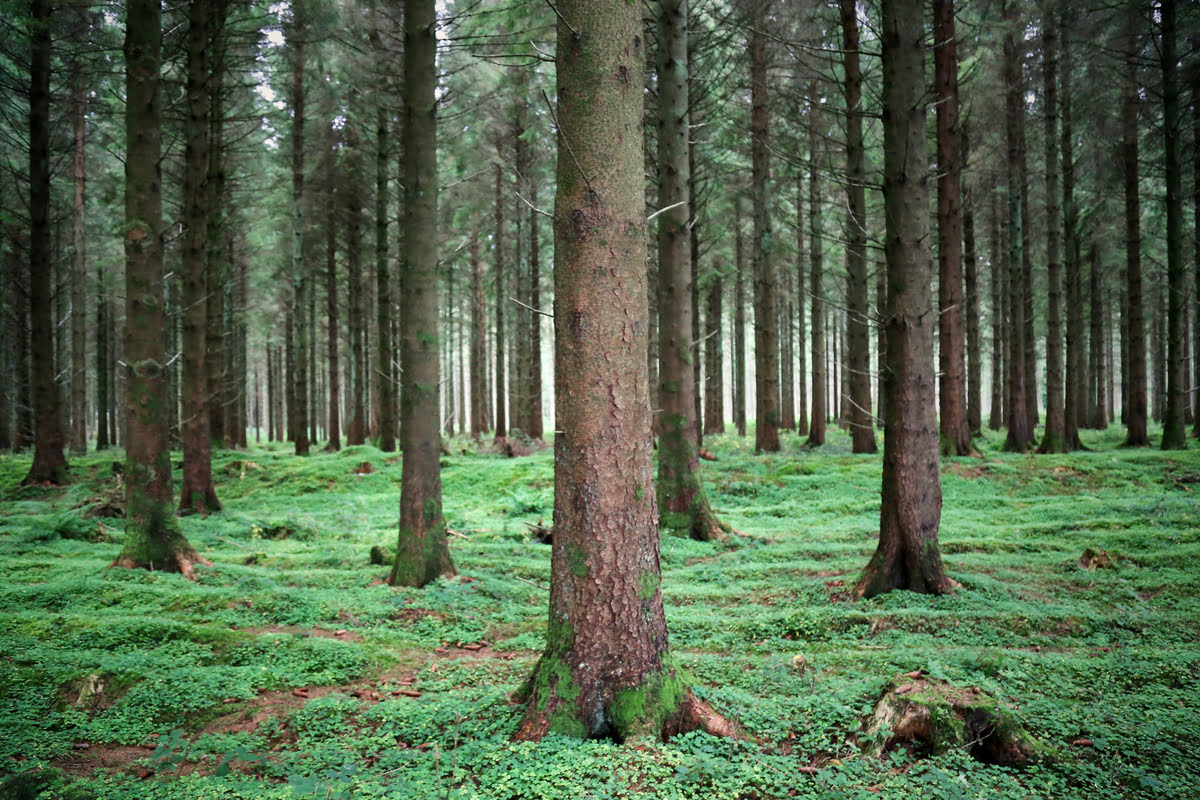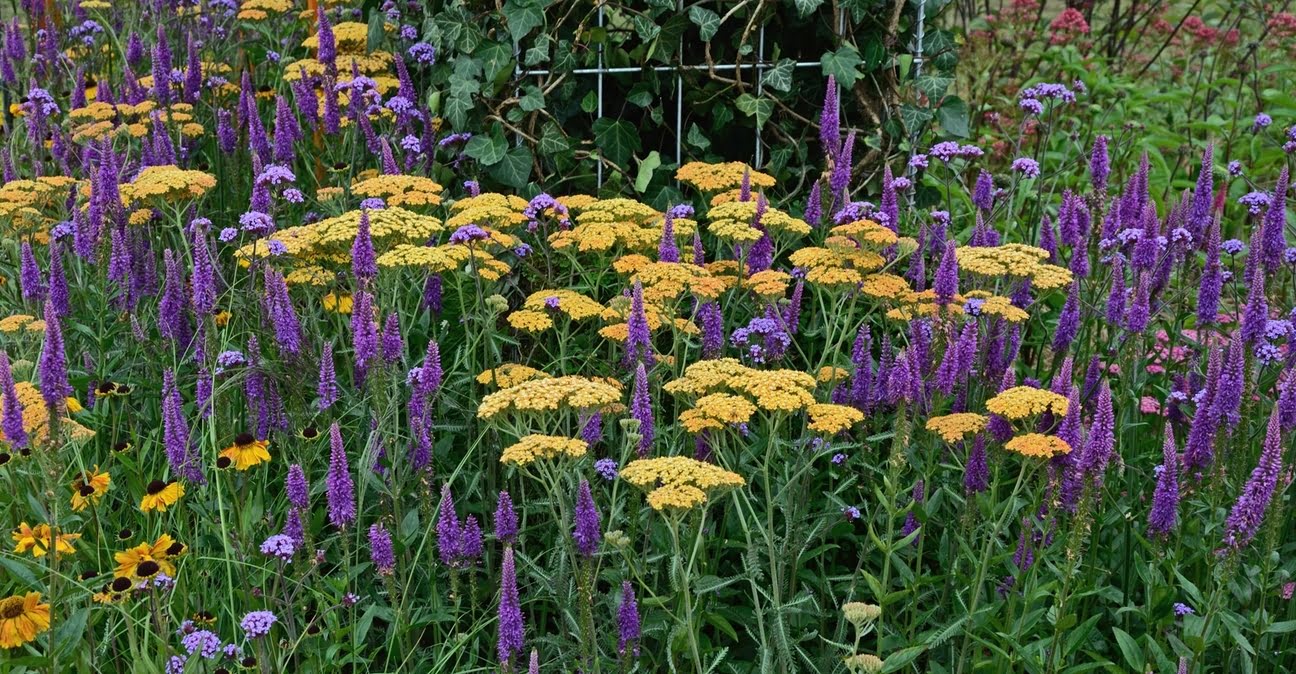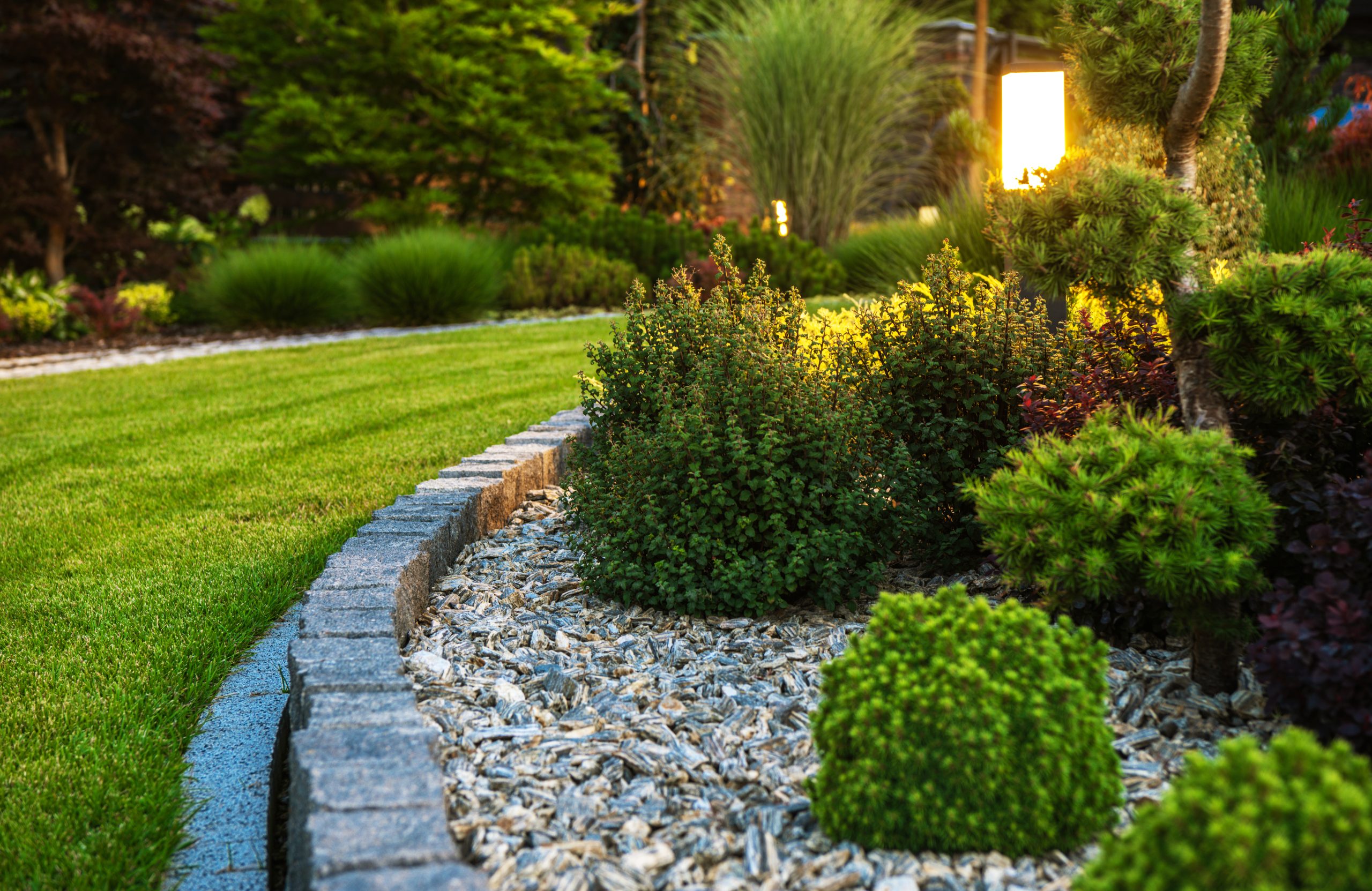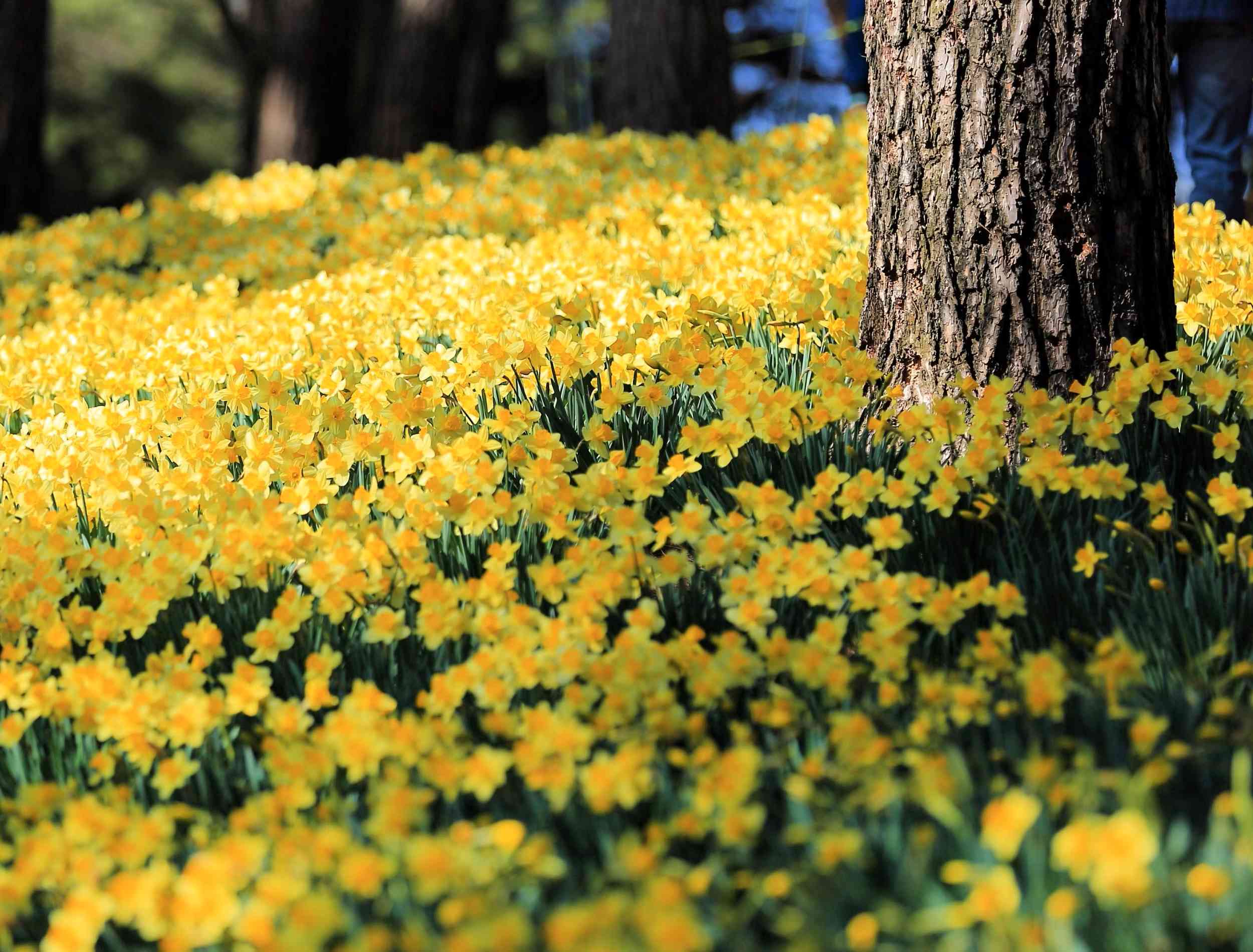Home>Garden Design>Planning Your Garden>What To Plant Under Shrubs
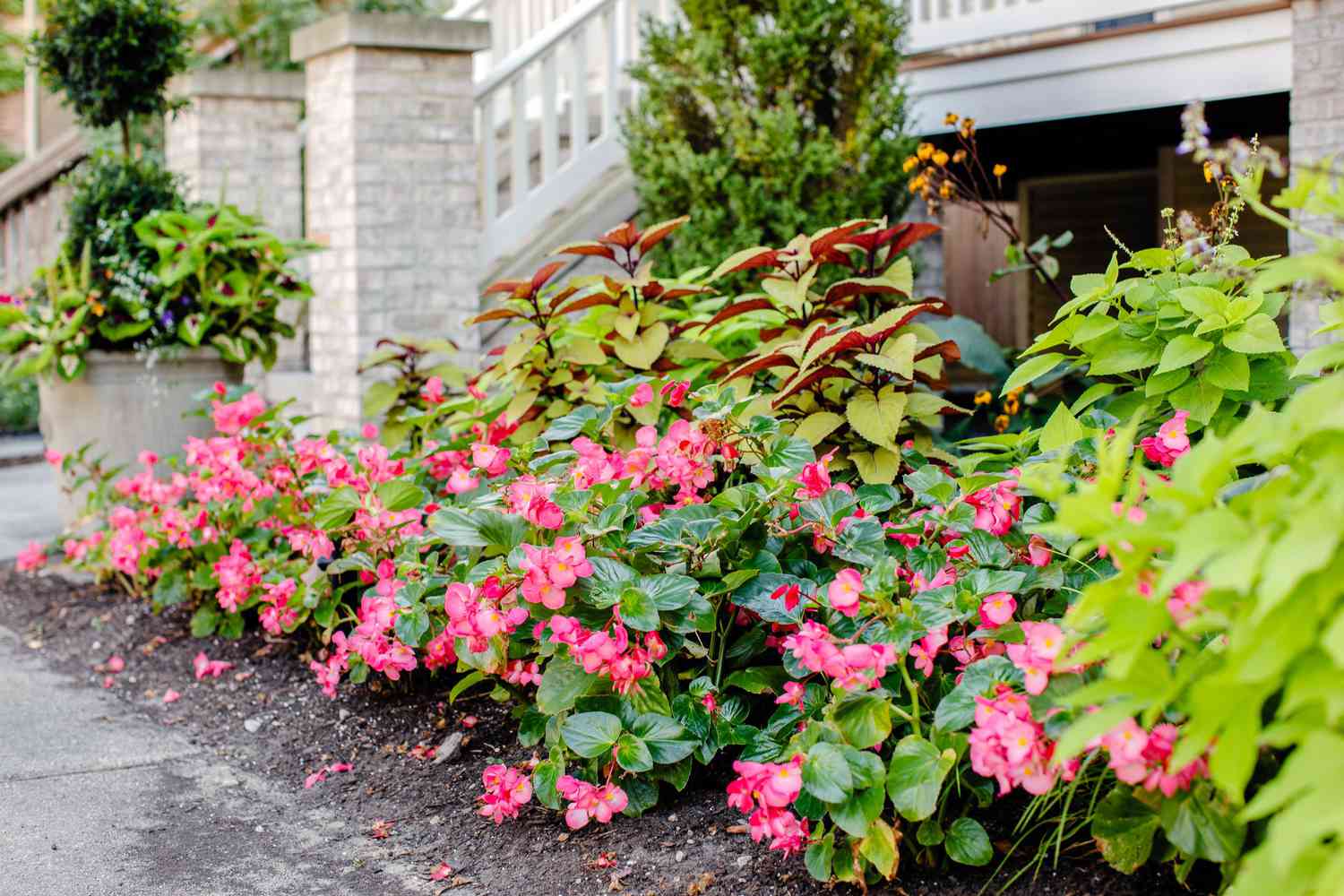

Planning Your Garden
What To Plant Under Shrubs
Modified: January 22, 2024
Looking for ideas on what to plant under shrubs? Discover the best plants for planning your garden and creating a stunning landscape design.
(Many of the links in this article redirect to a specific reviewed product. Your purchase of these products through affiliate links helps to generate commission for Chicagolandgardening.com, at no extra cost. Learn more)
Table of Contents
Introduction
When planning and designing your garden, it’s important to make the most of every inch of space. One often overlooked area is the space under shrubs. Instead of leaving it bare and unused, you can transform this area into a vibrant and functional part of your garden. Planting under shrubs not only enhances the overall aesthetic appeal of your garden, but it also maximizes the use of space and provides various benefits.
In this article, we will explore the benefits of planting under shrubs, factors to consider when selecting plants, and a variety of plant options for this unique gardening space.
Planting under shrubs offers numerous benefits for both the health of your garden and the environment. Firstly, it helps to suppress weed growth, as the plants act as a natural mulch, blocking sunlight and preventing weed seeds from germinating. Additionally, planting under shrubs adds a layer of insulation to the soil, reducing moisture loss and aiding in the retention of water. This is especially beneficial during dry periods or in areas with sandy soil.
Beyond the practical benefits, planting under shrubs can also enhance the visual appeal of your garden. It adds depth and dimension to the overall landscape design, creating a lush and layered effect. By choosing the right combination of plants, you can create a harmonious and cohesive look that complements the shrubs and other elements in your garden.
Before diving into the world of planting under shrubs, there are a few factors to consider. Firstly, assess the amount of shade the shrubs provide. This will determine the types of plants that can thrive in that particular environment. Secondly, consider the soil type and moisture levels under the shrubs. Some plants may prefer well-drained soil, while others thrive in moisture-retentive soil. Lastly, take into account the size and growth habit of the shrubs. Be mindful of planting too close to the base of the shrub, as it may hinder their growth or compete for nutrients.
Now that we have a better understanding of the benefits and factors to consider, let’s explore some of the best plant options for planting under shrubs. From shade-loving plants to groundcovers, flowering plants, and even edible options, there is a wide range of choices to suit your preferences and gardening goals.
Benefits of Planting Under Shrubs
Planting under shrubs offers a plethora of benefits, ranging from practical advantages to aesthetic enhancements. Let’s explore some of the main benefits:
1. Weed suppression: One of the most significant benefits of planting under shrubs is weed suppression. The plants act as a natural mulch, preventing weed seeds from germinating by blocking sunlight. This reduces the need for frequent weeding and helps maintain a clean and tidy garden.
2. Soil insulation: Planting under shrubs adds a layer of insulation to the soil. This insulation helps regulate soil temperature, protecting plant roots from extreme heat or cold. It also reduces moisture loss and aids in the retention of water, ensuring plants have access to essential moisture even during dry periods.
3. Enhanced visual appeal: A garden with lush and carefully planned layers looks more visually appealing. Planting under shrubs adds depth and dimension to the overall landscape design, creating a multi-layered and vibrant garden. By selecting plants with different heights, textures, and colors, you can create a harmonious and eye-catching display.
4. Biodiversity: Planting under shrubs promotes biodiversity in the garden. Different plant species attract a diverse range of insects, birds, and other beneficial wildlife, creating a balanced ecosystem. This not only adds to the beauty of your garden but also provides important habitats for pollinators and other beneficial creatures.
5. Improved soil health: The plant roots growing under shrubs help improve soil health. As the roots penetrate the soil, they create channels for air and water to reach deeper layers, improving overall soil structure. This allows for better nutrient absorption and encourages healthy root development.
6. Utilization of unused space: Planting under shrubs makes use of otherwise neglected space in your garden. Instead of leaving it bare and unproductive, you can transform it into a vibrant and functional part of your garden. This maximizes the use of space and creates a more dynamic and engaging landscape.
7. Reduced maintenance: Once established, the plants under shrubs require less maintenance compared to bare soil. They help reduce soil erosion and retain moisture, which means less frequent watering is needed. Additionally, the dense growth of the plants restricts weed growth, saving you time and effort that would otherwise be spent on controlling weeds.
Planting under shrubs is a rewarding gardening practice that not only benefits your garden but also supports a thriving ecosystem. By incorporating a variety of plants and considering the specific conditions under your shrubs, you can create a beautiful and low-maintenance garden space.
Factors to Consider When Planting Under Shrubs
When planting under shrubs, there are several important factors to consider to ensure the success and health of your plants. By taking these factors into account, you can create an optimal growing environment for the plants and promote a harmonious relationship between the shrubs and the underplantings.
1. Shade Levels: Assess the amount of shade provided by the shrubs. Different plants have varying shade tolerance levels, so it’s important to select plants that can thrive in the specific light conditions under the shrubs. Observe the area throughout the day to determine the intensity and duration of shade.
2. Soil Type and Moisture: Understand the soil type and moisture levels under the shrubs. Some plants prefer well-drained soil, while others thrive in moisture-retentive soil. Evaluate the soil’s texture and drainage capabilities. Consider whether the shrubs absorb most of the water, potentially leaving the underplantings drier, or if water tends to pool in the area.
3. Growth Habit of Shrubs: Consider the size and growth habit of the shrubs. Select plants that will not compete for nutrients or space with the shrubs. Avoid planting too close to the base of the shrubs as it may hinder their growth and create an overcrowded environment. Take into account the mature size of the shrubs to determine the appropriate spacing for the underplantings.
4. Root Competition: Be aware of potential root competition from the shrubs. Larger shrubs may have extensive root systems that could compete with the underplantings for water and nutrients. Choose plants that have the ability to coexist with shrub roots or select shallow-rooted plants that can thrive in limited soil space.
5. Complementary Growth: Select underplantings that complement the growth habit of the shrubs. Consider the texture, color, and form of both the shrubs and the underplantings to create a cohesive and visually pleasing combination. Choose plants that provide interesting contrasts or harmonious blends with the shrubs.
6. Seasonal Interest: Plan for year-round visual interest by selecting underplantings that bloom or provide foliage color at different times of the year. This ensures that the area under the shrubs remains attractive and vibrant throughout the seasons.
7. Maintenance: Consider the level of maintenance you are willing to devote to the underplantings. Some plants require more care and attention than others. If you prefer low-maintenance options, choose plants that are hardy, have a natural tendency to control weed growth, and require minimal pruning or fertilization.
By considering these factors, you can choose the most suitable plants for planting under shrubs. This thoughtful selection process will help create a thriving and visually appealing garden space while promoting the well-being and growth of both the shrubs and underplantings.
Shade-Loving Plants for Under Shrubs
When planting under shrubs in shaded areas, it’s important to select plants that thrive in low-light conditions. Shade-loving plants have adapted to receive minimal direct sunlight and are well-suited to grow under the canopy of larger shrubs. Here are some plant options to consider:
1. Hostas (Hosta spp.): These perennial plants are known for their beautiful foliage and ability to tolerate shade. With a variety of leaf colors and sizes, hostas add texture and visual interest to the shaded areas under shrubs. They prefer moist, well-drained soil and can handle varying levels of shade.
2. Astilbes (Astilbe spp.): These perennial flowers have attractive fern-like foliage and produce feathery plumes of flowers in shades of white, pink, and red. Astilbes thrive in moist, well-drained soil and are excellent for adding pops of color to the shaded areas. They prefer partial to full shade.
3. Heucheras (Heuchera spp.): With their vibrant, colorful foliage, heucheras add a striking visual element to the underplantings. They come in a variety of shades including burgundy, lime green, and silver. Heucheras prefer moist, well-drained soil and thrive in partial to full shade.
4. Ferns (Various species): Ferns are classic shade-loving plants that add a touch of elegance to the underplantings. They come in a range of sizes and textures, from delicate maidenhair ferns (Adiantum spp.) to robust sword ferns (Polystichum spp.). Ferns prefer moist, well-drained soil and thrive in the cool shade.
5. Bleeding Hearts (Dicentra spp.): These perennials produce heart-shaped flowers that dangle delicately from arching stems. They come in shades of pink, white, and red and are perfect for adding a romantic touch to the shaded areas. Bleeding hearts prefer moist soil and thrive in partial shade.
6. Lungworts (Pulmonaria spp.): Known for their attractive foliage and vibrant flowers, lungworts are excellent shade-loving plants for under shrubs. They produce clusters of funnel-shaped flowers in various shades of pink, blue, or white. Lungworts prefer moist, well-drained soil and can tolerate partial to full shade.
Remember to consider the specific light conditions under your shrubs and choose shade-loving plants accordingly. Providing these plants with adequate moisture and proper soil conditions will help them thrive and create a beautiful underplanting that complements the shrubs above.
Groundcover Options for Under Shrubs
Groundcovers are an excellent choice for planting under shrubs, as they provide a lush carpet of foliage that fills in empty spaces and adds a uniform look to the garden. Here are some groundcover options that thrive in the shade:
1. Creeping Jenny (Lysimachia nummularia): This fast-spreading groundcover has vibrant green leaves that create a dense mat of foliage. It can handle both sun and partial shade, making it a versatile choice for under shrubs. Creeping Jenny prefers moist soil and adds a pop of bright green color to the shaded areas.
2. Deadnettle (Lamium spp.): With their variegated leaves and colorful flowers, deadnettles are a popular choice for underplantings. These low-growing plants spread quickly and provide attractive ground coverage. They come in a variety of colors, including pink, purple, and white, and prefer partial to full shade.
3. Ajuga (Ajuga reptans): Ajuga is a hardy groundcover that spreads rapidly, forming a dense carpet of foliage. It has attractive bronze or variegated leaves and produces spikes of blue, purple, or white flowers. Ajuga prefers moist, well-drained soil and can tolerate partial shade.
4. Japanese Spurge (Pachysandra terminalis): This evergreen groundcover is known for its glossy, dark green leaves and tolerance to shade. Japanese Spurge forms a dense mat of foliage that suppresses weeds and stays green year-round. It prefers moist, well-drained soil and can tolerate a range of light conditions, including full shade.
5. Periwinkle (Vinca minor): Periwinkle is a popular choice for underplanting due to its attractive glossy leaves and delicate blue or purple flowers. It spreads quickly and provides good ground coverage, even in deep shade. Periwinkle prefers moist, well-drained soil and is easy to maintain.
6. Wild Ginger (Asarum europaeum): Wild Ginger is a shade-loving groundcover that thrives in moist, woodland-like conditions. It has heart-shaped leaves and produces inconspicuous maroon flowers in spring. Wild Ginger spreads slowly, forming a dense carpet of foliage that adds a touch of natural beauty to the underplantings.
When selecting groundcovers, consider their growth habit, spreading capability, and maintenance requirements. Keep in mind the available space under the shrubs and choose groundcovers that will not overpower or compete with the shrubs for resources. With the right groundcovers, you can create a beautiful, low-maintenance underplanting that enhances the overall aesthetic of your garden.
Flowering Plants for Under Shrubs
Adding flowering plants to the underplantings of shrubs can bring bursts of color and visual interest to your garden. These plants not only provide beautiful blooms but also attract pollinators and create a lively and vibrant atmosphere. Here are some flowering plant options that thrive in the shade:
1. Impatiens (Impatiens walleriana): Impatiens are popular annual plants that produce an abundance of colorful flowers in shades of pink, red, orange, and white. They thrive in shade and moisture-rich environments, making them an ideal choice for planting under shrubs. With their constant bloom from spring to fall, impatiens add vibrant splashes of color to the shaded areas of your garden.
2. Begonias (Begonia spp.): Begonias offer a wide range of cultivars and species with beautiful blooms in various colors, shapes, and sizes. They prefer shade or partial shade and well-drained soil. Whether you choose fibrous-rooted begonias with delicate flowers or tuberous begonias with larger and showier blooms, they are sure to brighten up the underplantings of your shrubs.
3. Perennial Geraniums (Geranium spp.): Perennial geraniums, also known as cranesbills, are well-suited for the shaded areas under shrubs. They produce delicate flowers in shades of pink, purple, or white and have attractive lobed leaves. Geraniums prefer well-drained soil and partial shade, and they bloom from late spring to summer.
4. Camellias (Camellia spp.): If you live in a climate with milder winters, consider planting camellias under your shrubs. These evergreen shrubs produce large, showy flowers in various colors, including pink, red, and white. Camellias prefer partial shade and acidic soil. Their stunning blooms bring elegance and beauty to the shaded areas of your garden.
5. Lily of the Valley (Convallaria majalis): Lily of the Valley is a charming perennial that thrives in the shade. It has delicate, bell-shaped flowers that release a sweet fragrance. This low-maintenance plant spreads quickly and forms dense clumps, making it an excellent groundcover option for under shrubs. Lily of the Valley prefers well-drained soil and partial to full shade.
6. Primroses (Primula spp.): Primroses are early-blooming perennials that produce clusters of vibrant flowers in shades of pink, purple, yellow, and white. They prefer moist soil and partial shade, making them a perfect choice for planting under shrubs. Primroses create a colorful and cheerful display in the early spring months.
When selecting flowering plants for under shrubs, consider their blooming season, growth habit, and the specific light and moisture conditions under your shrubs. By incorporating these flowering plants, you can bring a burst of color and a touch of natural beauty to the shaded areas of your garden.
Edible Plants for Under Shrubs
Utilizing the space under shrubs by planting edible plants not only enhances the beauty of your garden but also provides fresh and homegrown ingredients for your culinary endeavors. Here are some edible plant options that can thrive in the shade:
1. Herbs: Many herbs can grow well under shrubs in partially shaded areas. Mint, parsley, and chives are examples of herbs that can tolerate shade. Plant them in containers or small patches and enjoy flavorful herbs right in your own garden.
2. Leafy Greens: Several leafy greens are shade-tolerant and make excellent choices for planting under shrubs. Lettuce, spinach, and kale are among the leafy greens that can thrive with filtered sunlight. Harvest the tender leaves regularly for a nutritious addition to your meals.
3. Strawberries: Strawberries can be successfully grown in the shade, making them a great option for underplantings. They prefer cooler temperatures and can withstand lower light levels. Plant them in containers or along the edge of the shrub area for a sweet and juicy crop.
4. Radishes: Radishes are fast-growing root vegetables that can tolerate light shade. They have a relatively short growing season and are perfect for interplanting under shrubs. Enjoy their crispy texture and peppery flavor in salads and other dishes.
5. Nasturtiums: Nasturtiums are not only decorative but also edible. These colorful flowers have a peppery taste and make an attractive addition to salads and sandwiches. They thrive in partial shade and can provide a vibrant and edible groundcover under shrubs.
6. Asian Greens: Vegetables like bok choy, Chinese cabbage, and komatsuna are shade-tolerant and commonly used in Asian cuisine. These leafy greens can be grown under shrubs, providing a nutritious and flavorful addition to your kitchen.
When growing edible plants under shrubs, make sure to provide adequate moisture and well-drained soil. Keep in mind that the amount of sunlight and shade will affect the growth and productivity of these plants. Regularly harvest the mature leaves, fruits, or vegetables to encourage continuous growth and enjoy the fresh flavors of your homegrown produce.
Maintenance Tips for Planting Under Shrubs
Maintaining the underplantings of shrubs is crucial to ensure the health and vitality of both the shrubs and the surrounding plants. Here are some maintenance tips to keep in mind when planting under shrubs:
1. Watering: Monitor the moisture levels under the shrubs regularly, especially during dry spells. Most plants under shrubs benefit from consistent moisture, but be careful not to overwater, as this can lead to root rot. Water deeply and infrequently rather than shallow and frequent irrigation to encourage deeper root growth.
2. Mulching: Apply a layer of organic mulch, such as shredded bark or wood chips, around the underplantings. Mulch helps retain moisture, suppresses weed growth, and regulates soil temperature. It also adds nutrients to the soil as it decomposes over time.
3. Pruning: Regularly inspect the underplantings and remove any dead or diseased foliage. Prune shrubs if necessary to maintain their shape and prevent them from overcrowding the underplantings. Avoid pruning during the flowering season to preserve the blooms of shrubs and flowering plants.
4. Weed Control: Keep the area under shrubs free from weeds. Regularly pull out any weeds that emerge to prevent them from competing with the underplantings for nutrients and water. Applying a layer of mulch can help suppress weed growth and make weed removal easier.
5. Fertilization: Depending on the nutrient requirements of the underplantings, fertilize them as needed. Some plants may benefit from a slow-release organic fertilizer applied in the early spring. Be cautious not to over-fertilize, as excessive nutrients can lead to excessive foliage growth or even damage plants.
6. Monitoring for Pests and Diseases: Regularly inspect the underplantings for any signs of pests or diseases. Look for chewed leaves, yellowing foliage, or unusual spots. Early detection allows for prompt treatment and prevents the spread of pests or diseases to neighboring plants.
7. Seasonal Care: Adjust your maintenance routine based on the seasons. In the fall, clean up fallen leaves and debris to prevent fungal diseases. In winter, protect sensitive underplantings from cold temperatures by applying a layer of mulch or using temporary covers.
8. Regular Gardening Tasks: Incorporate the underplantings into your regular gardening tasks, such as weeding, fertilizing, and monitoring for pests and diseases. By including them in your routine, you can ensure that they are properly cared for and remain healthy and thriving.
By following these maintenance tips, you can create a vibrant and well-maintained underplanting beneath your shrubs. With regular care and attention, both the shrubs and the underplantings will flourish, enhancing the overall beauty and health of your garden.
Conclusion
Planting under shrubs can transform unused space into a thriving and visually appealing part of your garden. By carefully selecting the right plants based on shade tolerance, growth habits, and your gardening goals, you can create a beautiful and functional underplanting beneath your shrubs. The benefits of planting under shrubs are plentiful – from suppressing weeds and improving soil health to enhancing the aesthetic appeal of your garden.
When choosing plants for under shrubs, consider shade-loving plants, such as hostas and astilbes, that thrive in lower light conditions. Groundcover options like creeping jenny and ajuga provide a lush carpet of foliage, while flowering plants like impatiens and Japanese spurge add bursts of color. Don’t overlook the opportunity to grow edible plants like herbs, leafy greens, and strawberries under your shrubs, providing fresh ingredients for your meals.
While implementing your underplanting, it’s important to consider factors such as shade levels, soil type, growth habits of the shrubs, and complementary growth between the shrubs and underplantings. This thoughtful planning will ensure the successful coexistence of your shrubs and the underplantings beneath them.
Maintaining the underplantings is essential to their continued health and beauty. Regular watering, mulching, selective pruning, weed control, and seasonal care are all important aspects of maintenance. By incorporating these practices into your gardening routine, you can help your underplantings thrive and create a harmonious and well-maintained garden space.
Planting under shrubs provides an opportunity to maximize the use of space in your garden, enhance the overall landscape design, and contribute to a healthy ecosystem. Whether you choose shade-loving plants, groundcovers, flowering plants, or edible options, there is a wide range of choices available to suit your preferences and gardening goals.
So, take advantage of the space under your shrubs and unleash your creativity. With the right selection of plants and proper maintenance, you can create a flourishing and captivating underplanting that complements and enhances the beauty of your shrubs and your garden as a whole.



